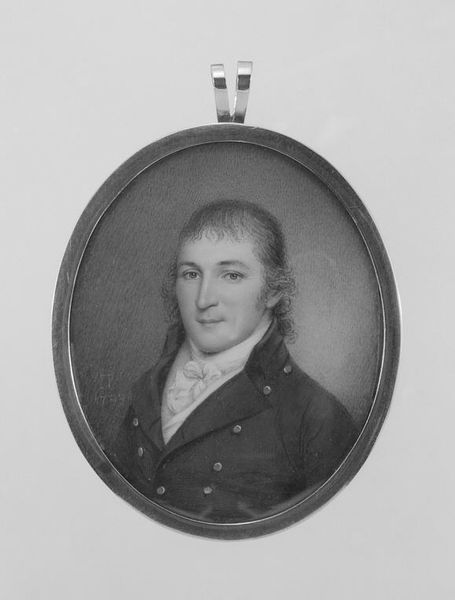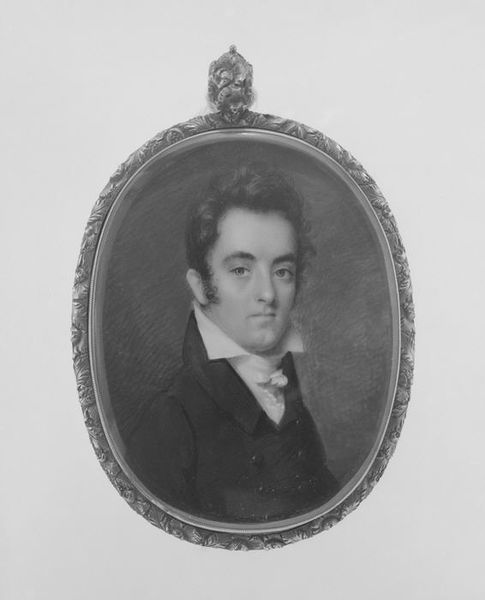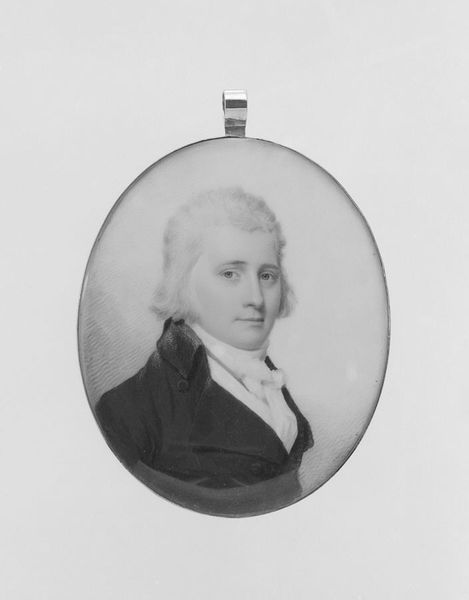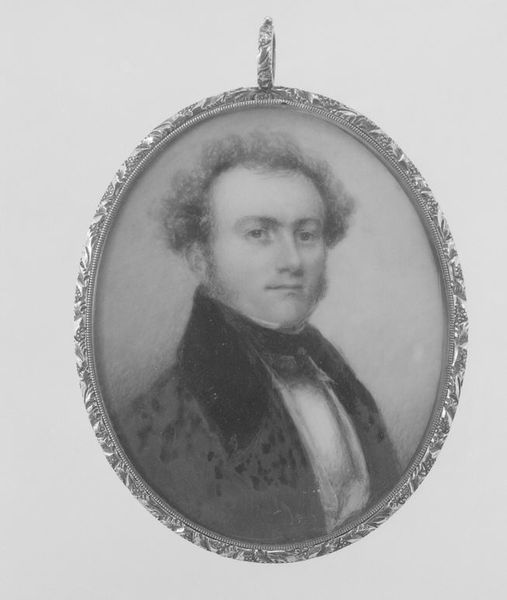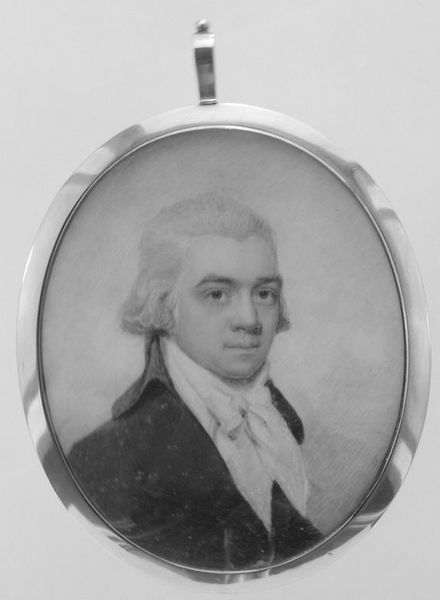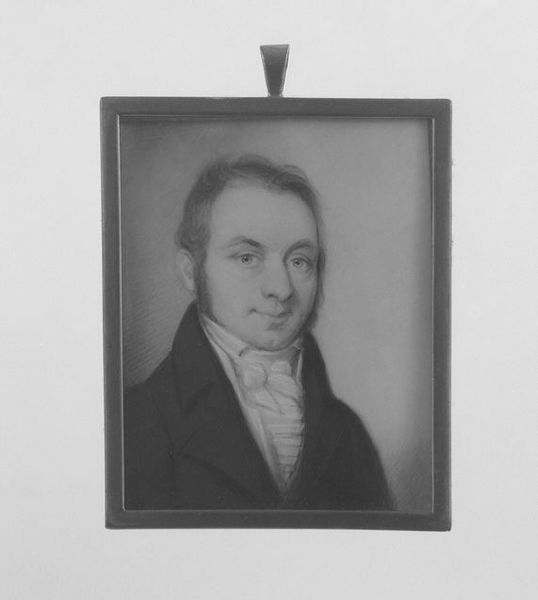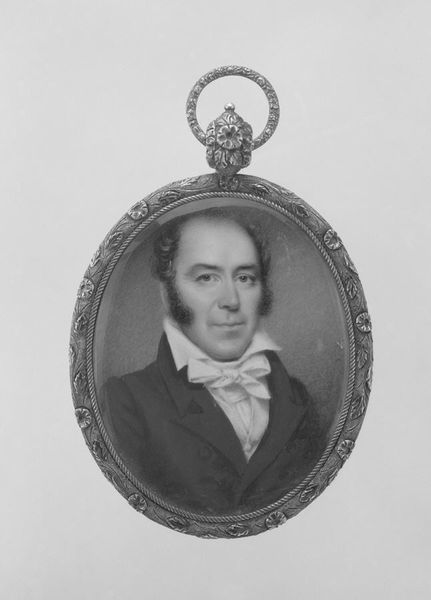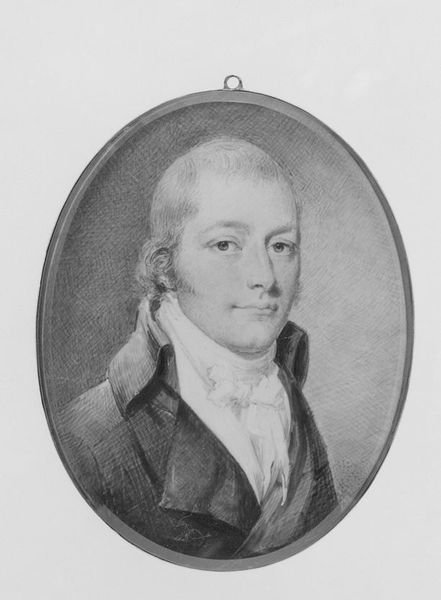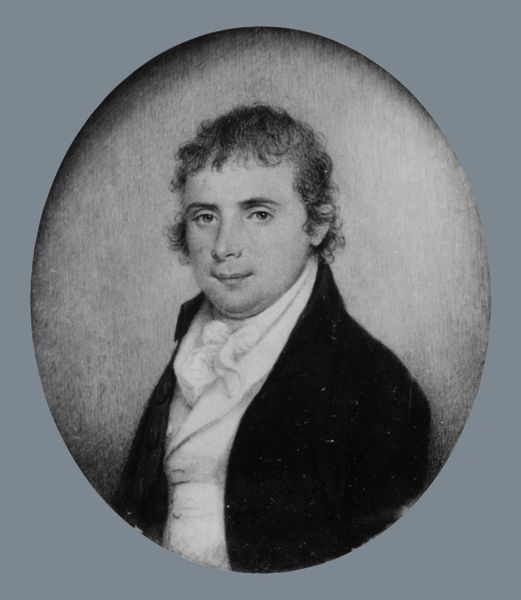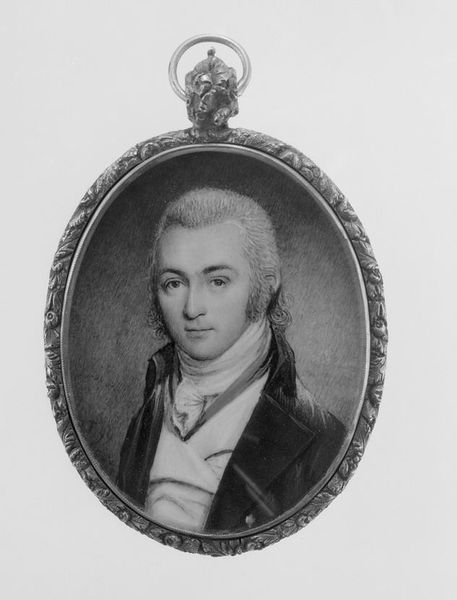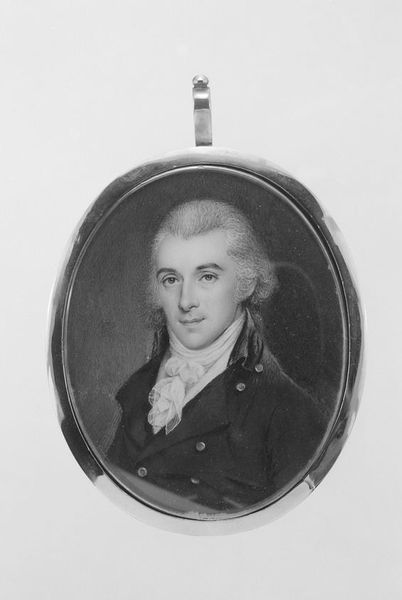
drawing, pencil
#
portrait
#
drawing
#
black and white
#
pencil
#
men
#
academic-art
#
realism
Dimensions: 2 3/4 x 2 1/4 in. (7 x 5.7 cm)
Copyright: Public Domain
Curator: Welcome. We are looking at "Portrait of a Gentleman," a pencil drawing from sometime between 1791 and 1878, by Anna Claypoole Peale. It resides here at The Metropolitan Museum of Art. Editor: My initial reaction is how delicate this is! It almost looks like it should be held, close to the body. Such precise lines. Curator: That's a great observation. Portrait miniatures like this were extremely popular. The scale itself speaks to the intimacy they represented – often given as tokens of affection or remembrance. Think about the socio-economic factors at play: commissioning such a piece signaled a certain level of affluence and status within the early Republic. Editor: And you can see that meticulous attention to detail. Look at the rendering of the hair, each strand painstakingly drawn; or how the soft, almost feathery application of graphite conveys the folds of his cravat. The quality of materials and time invested indicate value far beyond its modest size. Were miniatures always signs of wealth, of social class? Curator: Precisely! Although drawings like this could disseminate a specific kind of portraiture among an upwardly mobile merchant class, the artist herself needed materials and time. She relied on networks of patronage and the ability to participate in professional circles dominated by men. The art world then, like now, reflected existing power dynamics. Editor: So, while the miniature served as a status symbol for the sitter, its creation reflects the artist's own social and material conditions... Fascinating how a seemingly simple portrait opens up such layered discussions about labor, materials and power. Curator: Indeed. It's a window into the social complexities of the era. Even this 'simple' pencil would be very different depending on where it was made. Editor: Thanks, that close look helped me notice the material culture that went into its making.
Comments
No comments
Be the first to comment and join the conversation on the ultimate creative platform.
